√ダウンロード p(x)=x^3-3x^2-x+p 265359-How to find p(x 3)
P(X 1 < X 2 < X 3) = triple integral of e(x 1 x 2 x 3) dx 2 dx 1 dx 3 as x 2 goes from x 1 to x 3, x 1 goes from 0 to x 2 and x 3 goes from x 2 to infinity When I solve this integral I get 0 for an answer The back of the book suggests the answer is 1/6 Clearly, I am setting up the problem wrong, but I don't know where my mistake isThe conditional probability P ( Y ≤ 075 X = 05 ) cannot be interpreted as P ( Y ≤ 075, X = 05 ) / P ( X = 05 ), since the latter gives 0/0 Accordingly, P ( Y ≤ 075 X = 05 ) cannot be interpreted via empirical frequencies, since the exact value X = 05 has no chance to appear at random, not even once during an infinite sequenceP (x) is divisible by x means (x) is a factor of p => 15 5k = 0 k = 3 If k = 3, p (x) = 3x^2 25x 15 5k Check k = 3 p (x) = 3x^2 25x p (x) = x (3x 25) => p (x) is divisible by x Edit it is easier if you find p (x=0) and make it equal to zero, then solve it for k

Find The Values Of P And Q If The Polynomial G X X 2 3x 10 Is A Factor Of The Polynomial F X X 3 Px 2 Qx Mathematics Topperlearning Com Ix9eebmm
How to find p(x 3)
How to find p(x 3)-Share It On Facebook Twitter Email 1 Answer 0 votes answered Aug 7, 18 by Faiz Ahmad (617k points) selected Aug 12, 18 by vikash gupta Best answer WeProblem given that p(x)=x^53x^3x^21 what is p(2) Steps Replace EVERY copy of 'x' with 2 and evaluate You use PEMDAS or the order of operations to evaluate Replace EVERY copy of 'x



Find The Remainder When The Polynomial P X 4x 3 3x 2 2x 4 Is Divided By I X 1 Ii X 2
Click here👆to get an answer to your question ️ Let p(x) = x^4 3x^2 2x 5 Find the remainder when p(x) is divided by (x 1)Compute answers using Wolfram's breakthrough technology & knowledgebase, relied on by millions of students & professionals For math, science, nutrition, historyGet your answers by asking now Ask Question 100 Join Yahoo Answers and get 100 points today
Given that (x1)and(x2) are two factors of cubic polynomial x³3x²2pxq Since it is a cubic Polynomial;👍 Correct answer to the question Find p(–4) if p(x) = x ^3 – 3x^ 2 7x 6 eeduanswerscom Other questions on the subject MathematicsBy Rational Root Theorem, all rational roots of a polynomial are in the form \frac{p}{q}, where p divides the constant term 4 and q divides the leading coefficient 1 List all candidates \frac{p}{q} x=1 Find one such root by trying out all the integer values, starting from the smallest by absolute value If no integer roots are found, try
Ex23, 1 Divide the polynomial p(x) by the polynomial g(x) and find the quotient and remainder in each of the following (i) p(x) = x3 – 3x2 5x – 3, g(x) = x2 2 Quotient = (x − 3) Remainder (7x − 9) Ex23, 1 Divide the polynomial p(x) by the polynomial g(x) and find the quotient and remainder in each of the following (ii) p(x) = x4 – 3x2 4x 5, g(x) = x2 1 x Quotient = x2 x – 3 Remainder = 8 Ex23, 1 Divide the polynomial p(x) by the polynomial g(x) and find theQuestion given that p(x)=x^53x^3x^21 what is p(2) Answer by jim_thompson5910() (Show Source) You can put this solution on YOUR website!The roots i found so far are (x2)(x1)(x4) when you multipy it out, it is x^35x^22x8 What is the last root



Find The Value Of Polynomial P X X 3 3x 2 2x 6 At X 3 Brainly In



Find The Values Of P And Q If The Polynomial G X X 2 3x 10 Is A Factor Of The Polynomial F X X 3 Px 2 Qx Mathematics Topperlearning Com Ix9eebmm
Graph p(x)=(x2)(x2)(x3) Find the point at Tap for more steps Replace the variable with in the expression Simplify the result Tap for more steps Simplify each term Tap for more steps Raise to the power of Raise to the power of Multiply by Multiply by Simplify by adding and subtracting Tap for more stepsPlot x^3 3x^2 16x 12 or plot x^3 3x^2 16x 12 You can specify an x range For example, plot x^3 3x^2 16x 12, x=23 will plot only for x from 2 to 3 0 0 Still have questions?Divide Using Synthetic Division (x^33x^2x3)÷(x1) Place the numbers representing the divisor and the dividend into a division like configuration The first number in the dividend is put into the first position of the result area (below the horizontal line )



If P Q And R Are Zeroes Of P X 9x 3 3x 2 7x 1 Then Find The Value Of P 1 Q 1 R 1 Math Polynomials Meritnation Com
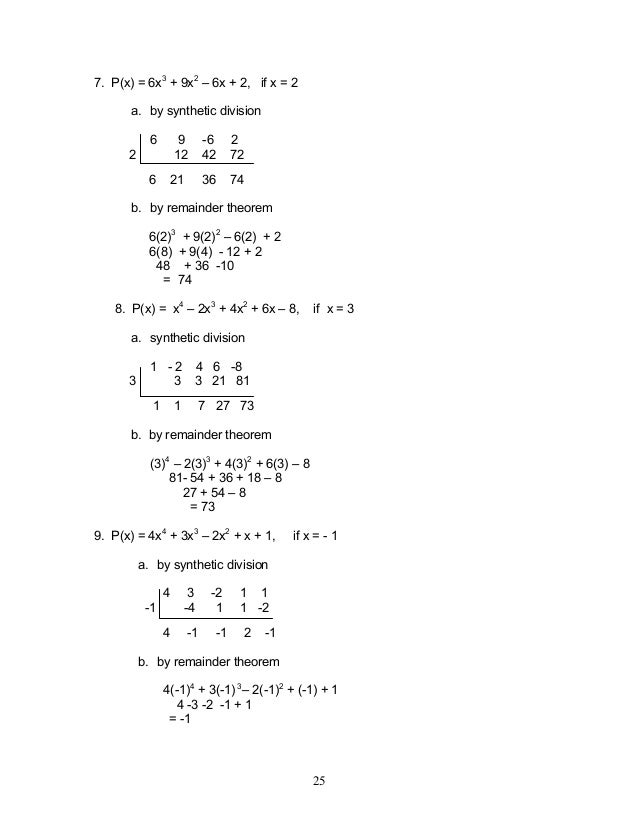


Module 1 Polynomial Functions
For what value of b will the polynomial P(x) = 4x^3 3x^2 bx 6 have the same remainder when it is divided by both x 1 and x 3?Click here👆to get an answer to your question ️ When p(x) = x^3 ax^2 2x a is divided by (x a) , the remainder isGiven ax^3 4x^2 3x 4 and x^3 4x a leave the same remainder when divided by x 3 Let p(x) = ax^3 4x^2 3x 4 and g(x) = x^3 4x a By remainder theorem, if f(x) is divided by (x − a) then the remainder is f(a) Here when p(x) and g(x) are divided by (x − 3) the remainders are p(3) and g(3) respectively
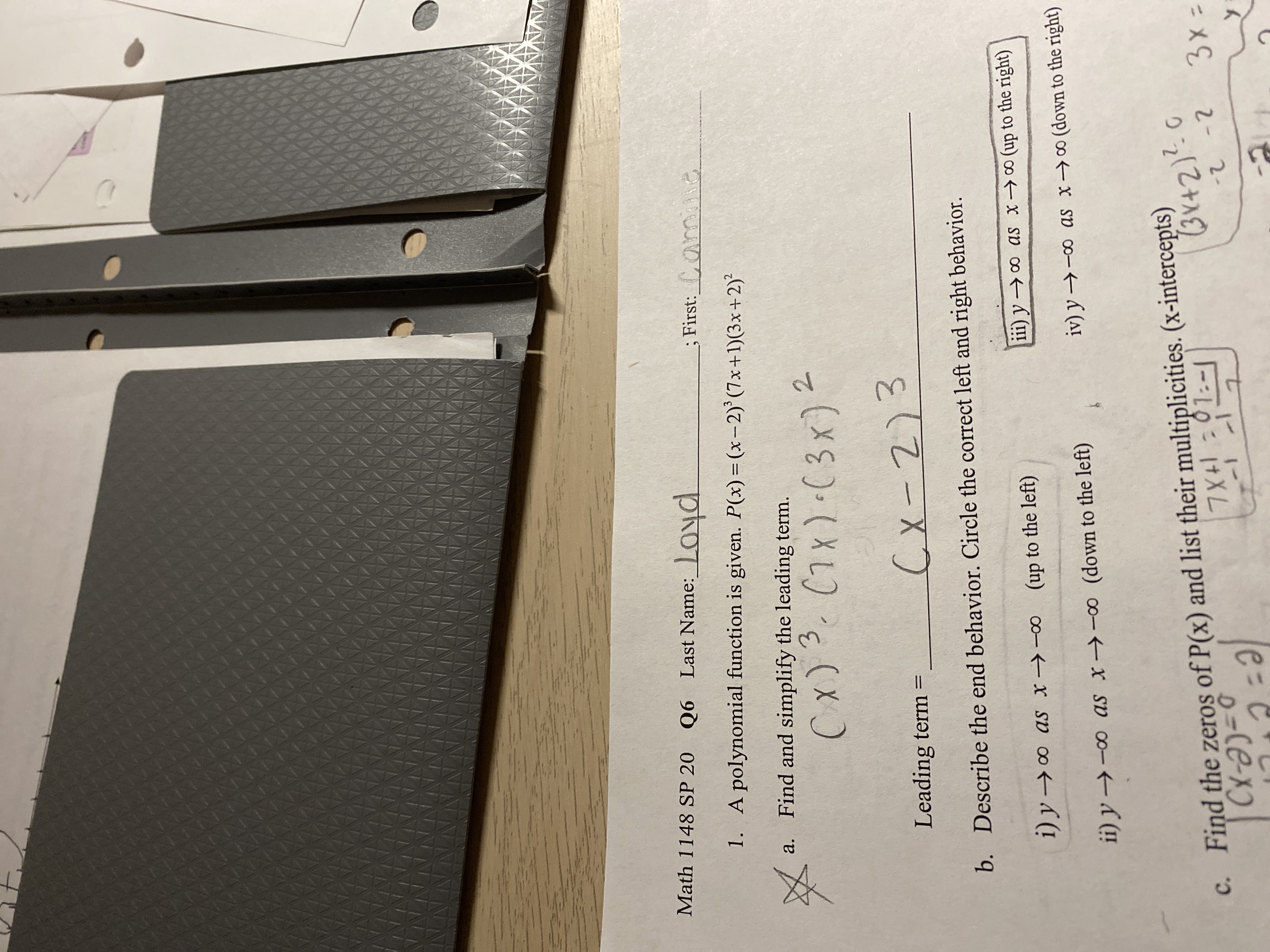


Answered Math 1148 Sp Q6 Last Name Ovd Bartleby



Ml Aggarwal Solutions For Class 10 Chapter 5 Quadratic Equations In One Variable Free Pdf Available
Step by step solution Step 1 Equation at the end of step 1 (((x 3) 3x 2) x) 1 = 0 Step 2 Checking for a perfect cube 21 x 33x 2 x1 is not a perfect cube Trying to factor by pulling out 22 Factoring x 33x 2 x1 Thoughtfully split the expression at hand into groups, each group having two termsContinuous Random Variables can be either Discrete or Continuous Discrete Data can only take certain values (such as 1,2,3,4,5) Continuous Data can take any value within a range (such as a person's height)If p(x) = 4x33x2 2x4 evaluate p(2)p(0) p(1) Math Polynomials NCERT Solutions;



The Polynomials P X Kx 3 3x 2 3and Q X 2x 3 5x K When Divided By X 4 Leave The Same Youtube
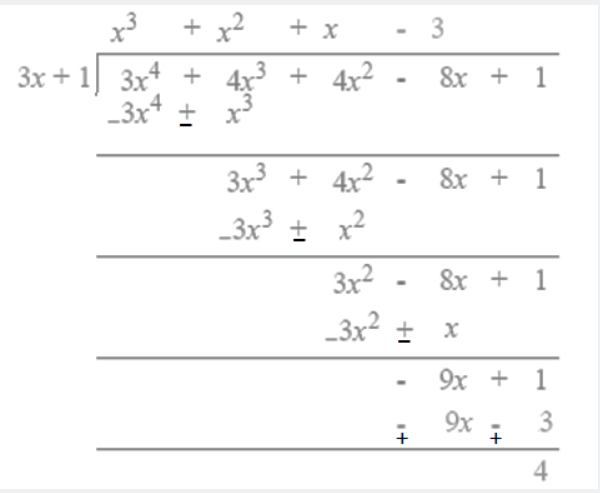


Question Divide Polynomial P X 3x 4 4x 3 4x 2 8x 1by Q X 3x 1 Also Find What Should Be Added To P X So That It Is Completely Divisible By Q X Snapsolve
If p(a)=p(b)=p(c)=k then (2a)(2b)(2c) = 5k Given p(x) = x^33x^22x5 Suppose p(a) = p(b) = p(c) = k where a, b, c are all distinctSolve your math problems using our free math solver with stepbystep solutions Our math solver supports basic math, prealgebra, algebra, trigonometry, calculus and moreAsked Jan 30, 18 in Class IX Maths by saurav24 Expert (14k points) By remainder theorem, find the remainder when p (x) is divided by g (x) (i) p (x) = x 3 2x 2 4x1, g (x)=x 1 (ii) p (x) = x 3 3x 2 4x 50, g (x)= x 3 (iii) p (x) = x 3 – 12x 2 14x 3, g (x)= 2x 1 1



Find All Rational Zeros Of The Polynomial X 3 3x 2 4 Youtube



How To Show That P X X 3 3x 2 2x 6 Has Only One Zero Brainly In
0 5 7784 2 For what value of b will the polynomial P(x) = 4x^3 3x^2 bx 6 have the same remainder when it is divided by both x 1 and x 3?Here, p (x) = 3 x − 2 In order to find zero of p (x), we equate p (x) to 0, i e p (x) = 0 ⇒ 3 x − 2 = 0 ⇒ 3 x = 2 ⇒ x = 3 2 ∴ 3 2 is the zero of p (x) Therefore, option D is correctP(x)is a polynomial of degree more than 2When p(x) is divided by x2,it leaves a remainder 1and when it is divided by x3,it leaves a remainder 3 Find the remainder when p(x) is divided by(x2) (x30



Check Whether G X X 2 3x 1 Is A Factor Of The Polynomial P X 3x 4 5x 2 7x 2 2x 2 By Dividing P X By G X
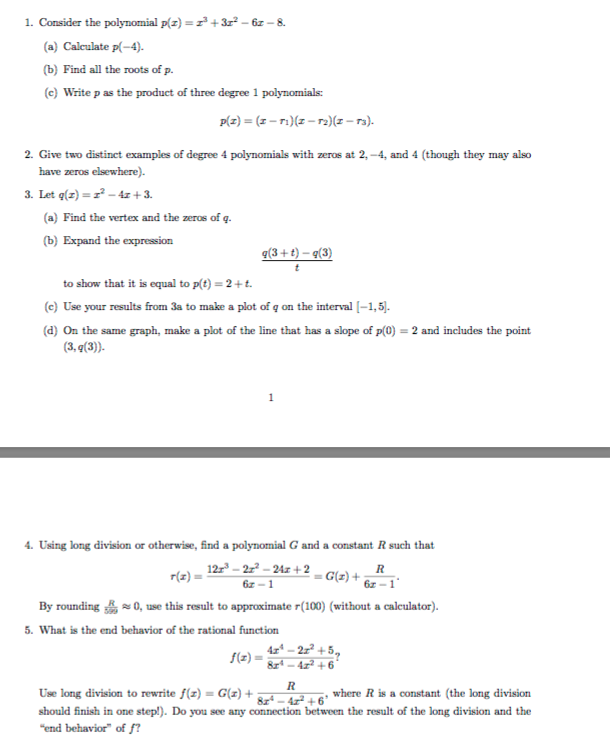


Solved Consider The Polynomial P X X 3 3x 2 6x Chegg Com
Simple and best practice solution for P(x)=x^42x^37x^28x12 equation Check how easy it is, and learn it for the future Our solution is simple, and easy to understand, so don`t hesitate to use it as a solution of your homeworkGet stepbystep answers and hints for your math homework problems Learn the basics, check your work, gain insight on different ways to solve problems For chemistry, calculus, algebra, trigonometry, equation solving, basic math and moreSolution for Given f(x) = x^3 3x^2 – 1 Use the first or second derivative tests to a) Find the relative extrema b) Determine the intervals where the graph



Class 9 Polynomial 2 Coordinate Geometry Linear Equation In Two Variables Euclid S Geometry Lines And Angles Notes
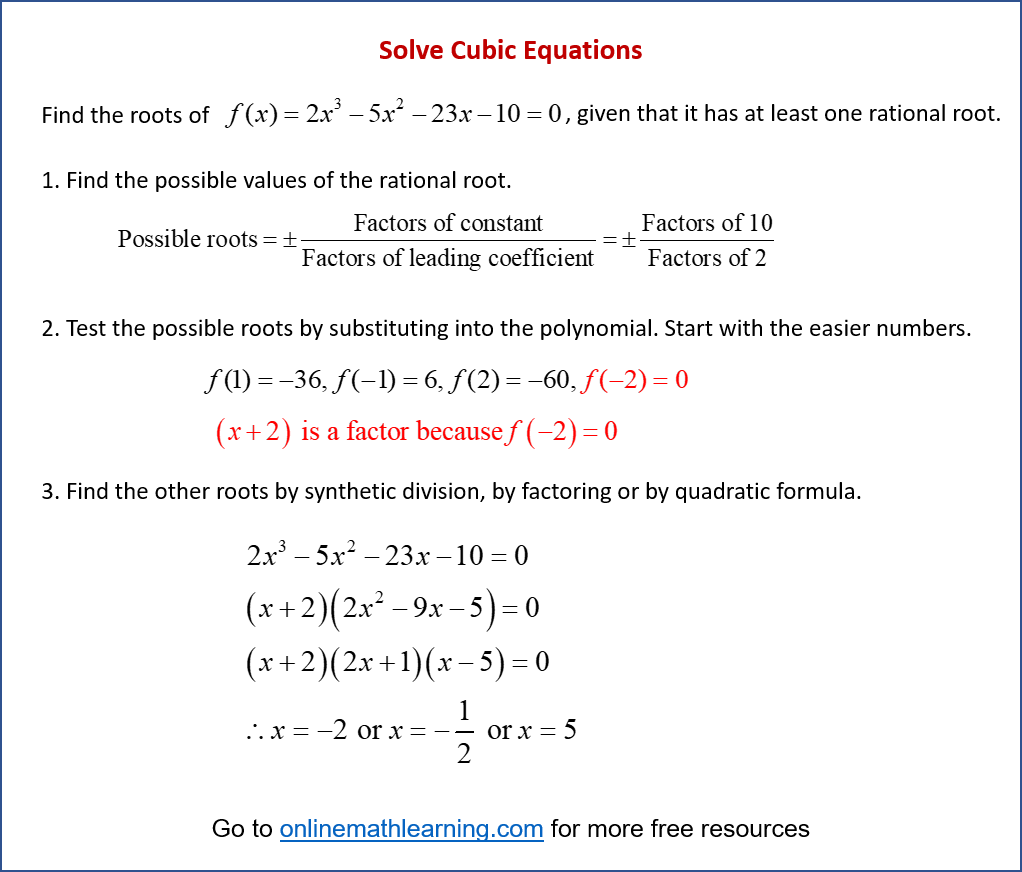


Solving Cubic Equations Solutions Examples Videos
If p (x) = x2 – 4x 3, then evaluate p(2) – p (1) p (1/2)So, in combination with the Rational Roots Theorem, we can deduce that the only possible rational zeros of P(x) are 1, 2, 3, 6 We could try each of these values in turn and find that P(1) = P(2) = P(3) = 0 Hence P(x) = (x1)(x2)(x3) but here's another way color(white)() Sum of coefficients shortcut Note that the sum of the coefficients of P(x) is zeroIf x = 1/2 is a zero of the polynomial p(x) = 8x 3 ax 2 x 2, find the value of a factorization of polynomials;


Search Q Remainder Theorem Tbm Isch


Find The Zero Of The Polynomial P X 2x 5
Divide Using Synthetic Division (x^33x^2x3)÷(x1) Place the numbers representing the divisor and the dividend into a division like configuration The first number in the dividend is put into the first position of the result area (below the horizontal line )Factor the polynomial P(x) Then solve the equation P(x)=0 1 P(x) = 2 P(x) = 3 P(x) = 4 P(x) = 1 P(x) = The integer 1 is the root Indeed, P(1) = = = It means that the binomial (x1) divides the polynomial P(x) P(x) = (x1)*Q(x), where Q(x) is a quadratic polynomial (See the Remainder Theorem in the lessonSee the answer Let the polynomial P be defined by p(x)= 4x^32x^23x What is the degree of P, its leading coefficient, and its constant term
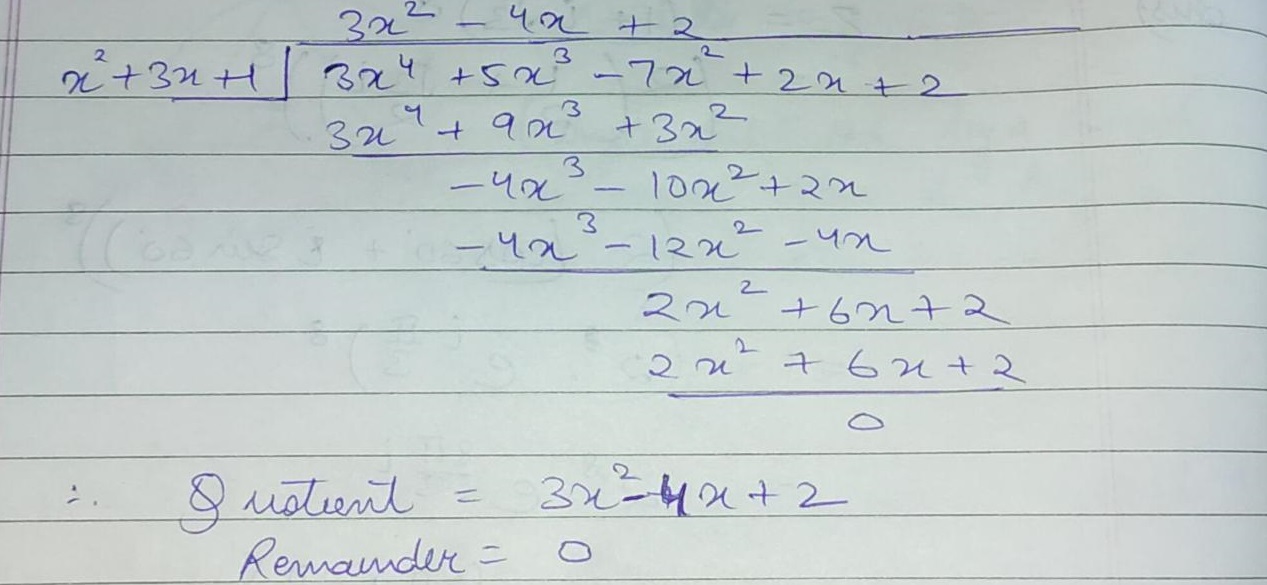


Divide P X 3x 4 5x 3 7x 2 2x 2 By G X X 2 3x 1 And Find The Quotient And Remainder



Find The Value Of Polynomial P X X 3 3x 2 2x 6 At X 3 Brainly In
Solved Sketch the graph of the polynomial function P(x)=x^33x^210x24 Describe the end behavior and indicate all intercepts By signing up,Let us assume its third factor be (xk) Hence we should have (x1)(x2)(xk)= x³3x²2pxq On multiplying the factors on LHS and arranging tQuestion 5059 Let P(x)= 2x^35x^24x3 Find the complete factorization of P I think this needs to be a Polynomial but I'm not sure where to begin I understand how to do everything else with the equation This one kind of screws me up Please help Answer by rothauserc(4717) (Show Source)



Find All The Zeroes Of P X 2x 4 3x 3 3x 2 6x 2 If You Know That Two Of Its Zeroes Are 2 And 2



What Is The Value Of P And Q If X 1 And X 2 Are The Factors Of X 3 3x 2 2px Q Quora
Consider the following P (x) = x^3 4x^2 7x 28, c = 4 Show that the given value of c is a zero of P(x) Find all other zeros of P(x) (Enter your answers as a commaseparated list) x = Get more help from Chegg Solve it with our precalculus problem solver and calculatorGet an answer for 'Find the complete factorization of P(x) = x^42x^35x^28x4?Ex 24, 3 Find the value of k, if x 1 is a factor of p(x) in each of the following cases (i) p(x) = x2 x k Finding remainder when x2 x k is divided by x 1 Step 1 Put Divisor = 0 x 1 = 0 x = 1 Step 2 Let p(x) = x2 x k Putting x = 1 p(1) = (1)2 1 k = 1 1 k = 2 k Thus, Remainder = p(1) = 2 k Since x 1 is a factor of x2



Factoring Using Polynomial Division Video Khan Academy



By Dividing P X 2x 3 3x 2 17x 30 By G X X 3 Show That G X Is A Factor Of P X And Hence Factorize P X Completely
To divide by (x 3 ) you don't have to divide by (x 3 ) Using the Remainder Theorem you just have to evaluate P( 3 ) # P( 3 ) = ( 3 )^4 9( 3 )^3 5( 3 )^2 3( 3 ) 4 # = 81 243 45 9 4 = 292 ie remainder = 292Free equations calculator solve linear, quadratic, polynomial, radical, exponential and logarithmic equations with all the steps Type in any equation to get the solution, steps and graphFactorize the polynomial {eq}p(x) = x^3 3x^2 4x 12 {/eq} Factoring Having a polynomial of grade greater than 3, the first step in factoring the polynomial is to group some terms that allow



What Is The Value Of P And Q If X 1 And X 2 Are The Factors Of X 3 3x 2 2px Q Quora



When The Polynomial P X X3 3x2 2ax 3 Where A Is Constant Is Divided By X2 1 Andremainder Brainly In
If p(a)=p(b)=p(c)=k then (2a)(2b)(2c) = 5k Given p(x) = x^33x^22x5 Suppose p(a) = p(b) = p(c) = k where a, b, c are all distinctIf p(x)=x^33x^22x5 and p(a)=p(b)=P(c)=0 then the value of (2a)(2b)(2c) P(x)=(xa)(xb)(xc) as a,b,c are the roots thus putting x=2 in P(x) we get the vaApplect Learning Systems Pvt Ltd What are you looking for?
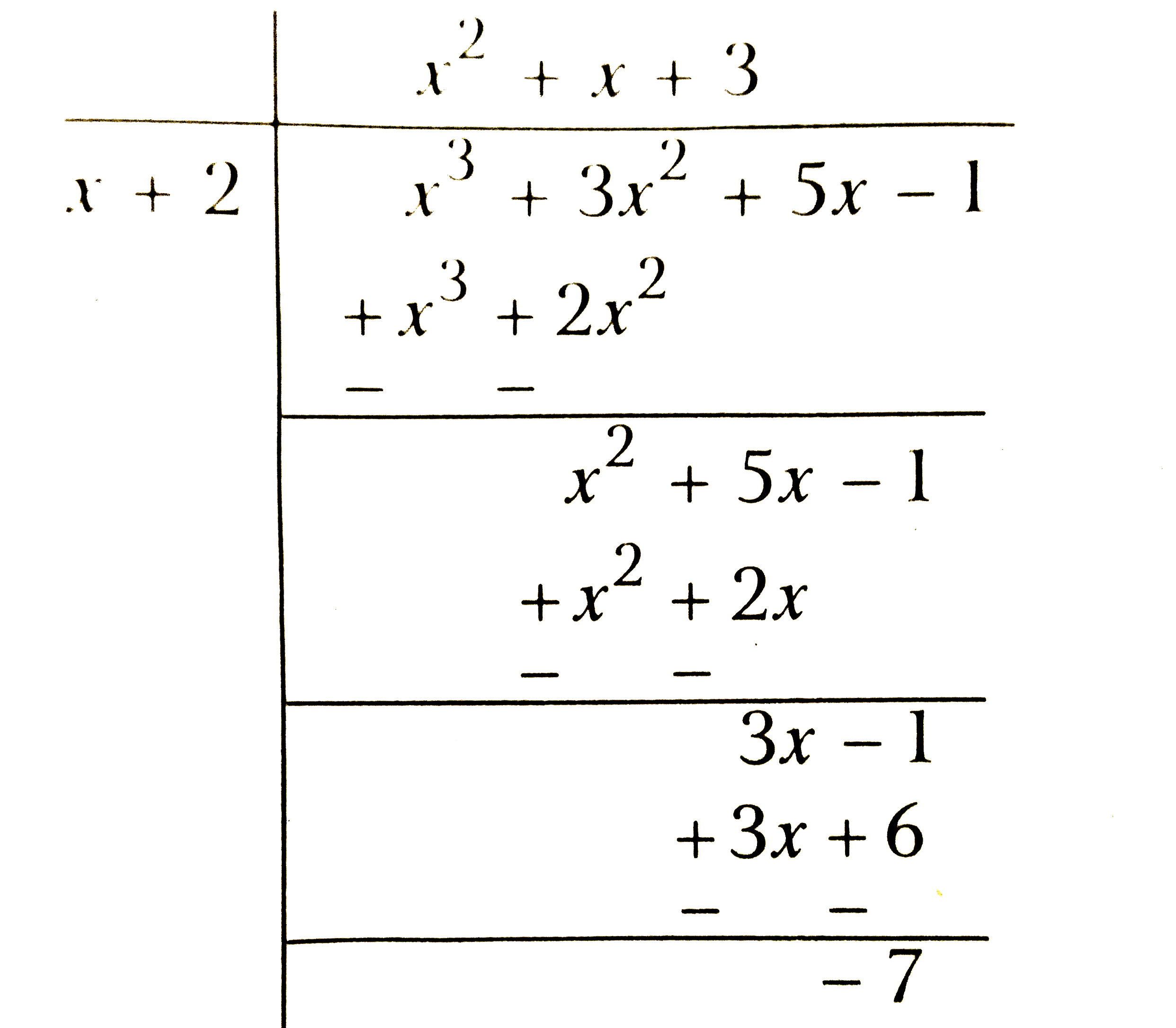


यद G X X 2 और P X X 3 3x 2 5x 1 त P X क G X



If P X 3x 3 2x 2 6x 5 Find P 2
The conditional probability P ( Y ≤ 075 X = 05 ) cannot be interpreted as P ( Y ≤ 075, X = 05 ) / P ( X = 05 ), since the latter gives 0/0 Accordingly, P ( Y ≤ 075 X = 05 ) cannot be interpreted via empirical frequencies, since the exact value X = 05 has no chance to appear at random, not even once during an infinite sequenceSolve your math problems using our free math solver with stepbystep solutions Our math solver supports basic math, prealgebra, algebra, trigonometry, calculus and moreX is a value that X can take;



Solved 1 Find The Quotient And Remainder By Using Long D Chegg Com



Further Notes On Long Division Pdf
The highest order of x is 3, so that p(x) is not a quadric function b m(x) = (4x 3) 2 m(x) = 4x 3 2 m(x) = 4x 5 The highest order of x is 1, so that m(x) is not a quadric function c t(x) = –8x²(x² – 6) t(x) = –8x⁴ 48x² The highest order of x is 4, so that t(x) is not a quadric function d h(x) = 3x(x – 2Notice the different uses of X and x X is the Random Variable "The sum of the scores on the two dice";Question Let The Polynomial P Be Defined By P(x)= 4x^32x^23x What Is The Degree Of P, Its Leading Coefficient, And Its Constant Term This problem has been solved!
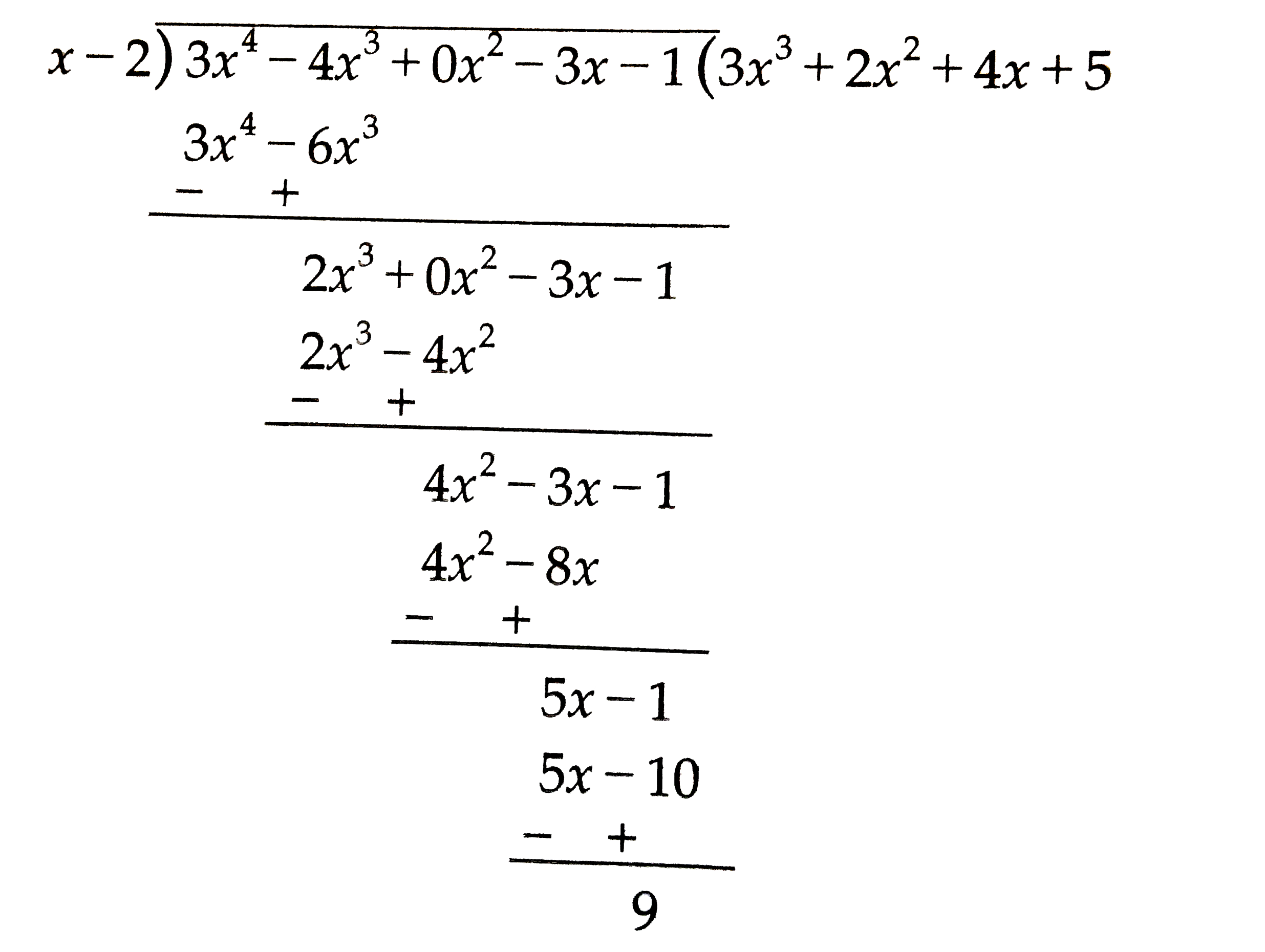


Verify Division Algorithm For The Polynomials Br P X 3x
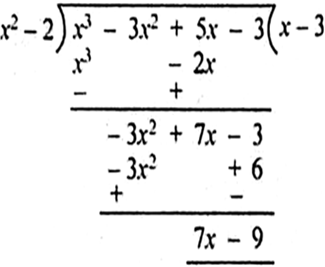


Divide The Polynomial P X By The Polynomial G X And Find The Quotient And Remainder In Each Of The Following P X X3 3x2 5x 3 G X X2 2 Zigya
Transcript Ex 24, 3 Find the value of k, if x 1 is a factor of p(x) in each of the following cases (i) p(x) = x2 x k Finding remainder when x2 x k is divided by x 1 Step 1 Put Divisor = 0 x 1 = 0 x = 1 Step 2 Let p(x) = x2 x k Putting x = 1 p(1) = (1)2 1 k = 1 1 k = 2 k Thus, Remainder = p(1) = 2 k Since x 1 is a factor of x2 x k Remainder is zero, 2 k = 0 k


The Polynomial F X X4 2x3 3x2 Ax B When Divided By X 1 And X 1 Leaves The Remainders 5 And 19 What Is The Value Of A And B And What Is The Remainder When F X



Class 9 Polynomial 2 Coordinate Geometry Linear Equation In Two Variables Euclid S Geometry Lines And Angles Notes
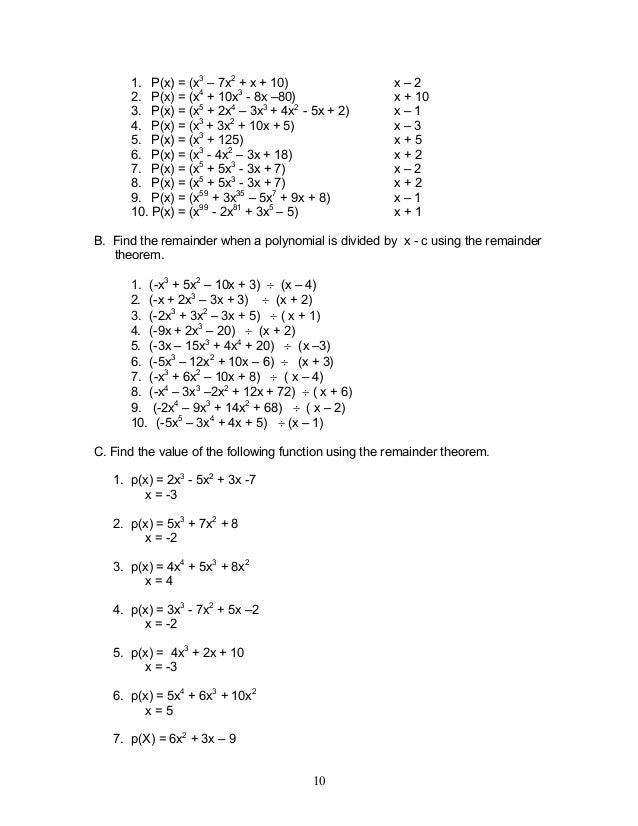


Module 1 Polynomial Functions
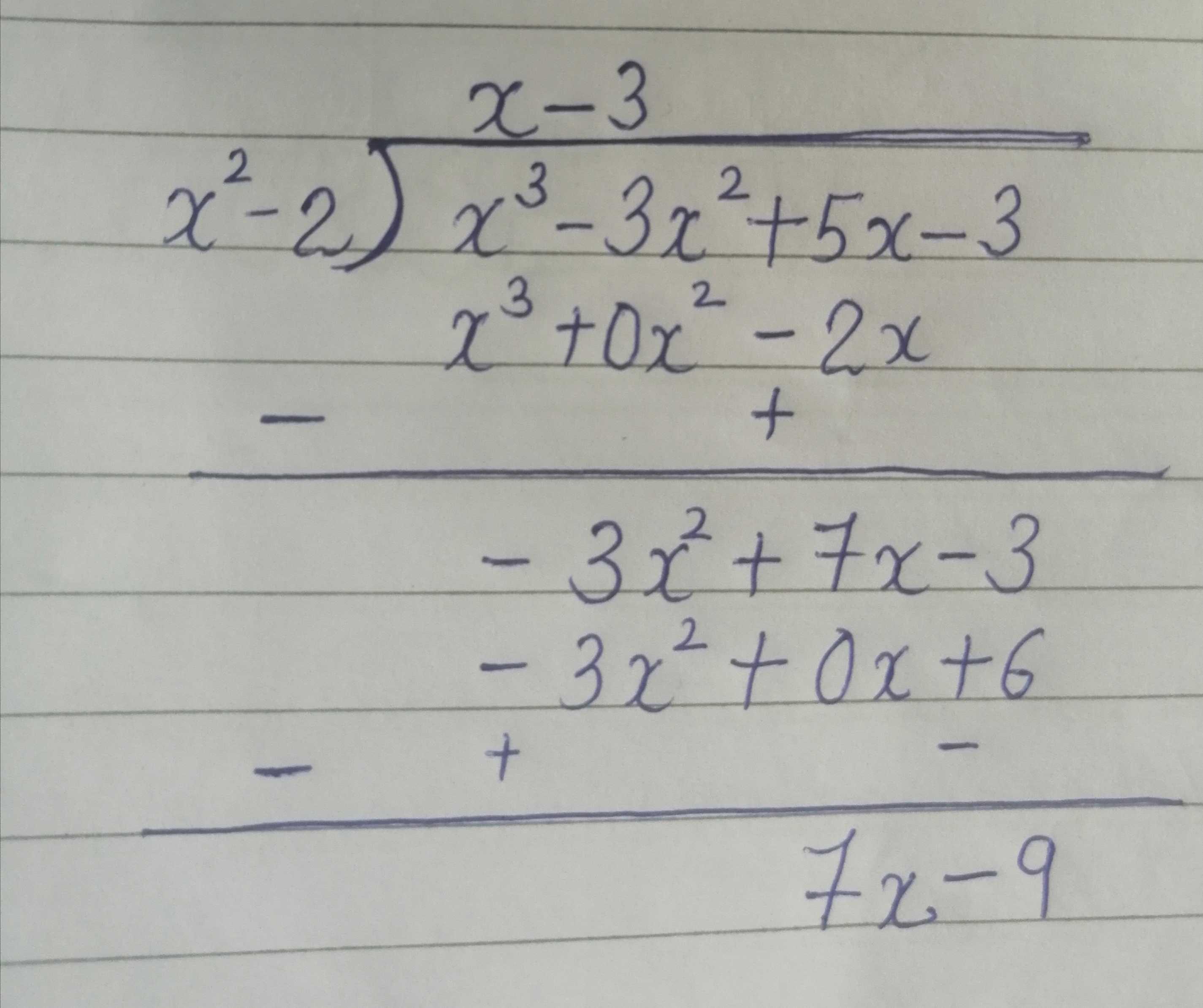


If P X X3 3x2 5x 3 And G X X2 2 Find Remainder Mathematics Topperlearning Com T7tfrb44
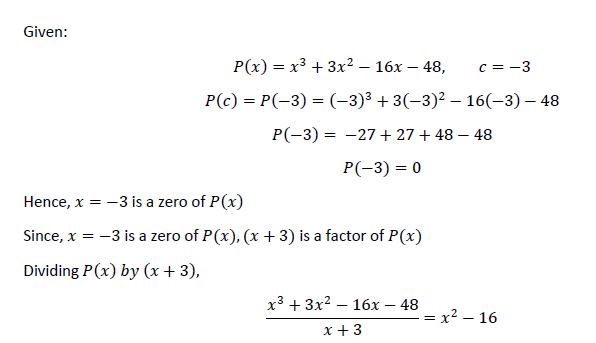


Answered P X X3 3x2 16x 48 C 3 Show Bartleby


Solution P X X 3 3x 2 4x 12 Factor The Polynomial And Use The Factored Form To Find The Zeros Put It In A Table And Sketch A Graph



Factorise X3 3x2 9x 5 Cbse Class 9 Maths Learn Cbse Forum



Solved Exercise 3 Let P X X3 3x2 3x 1 Show That Chegg Com
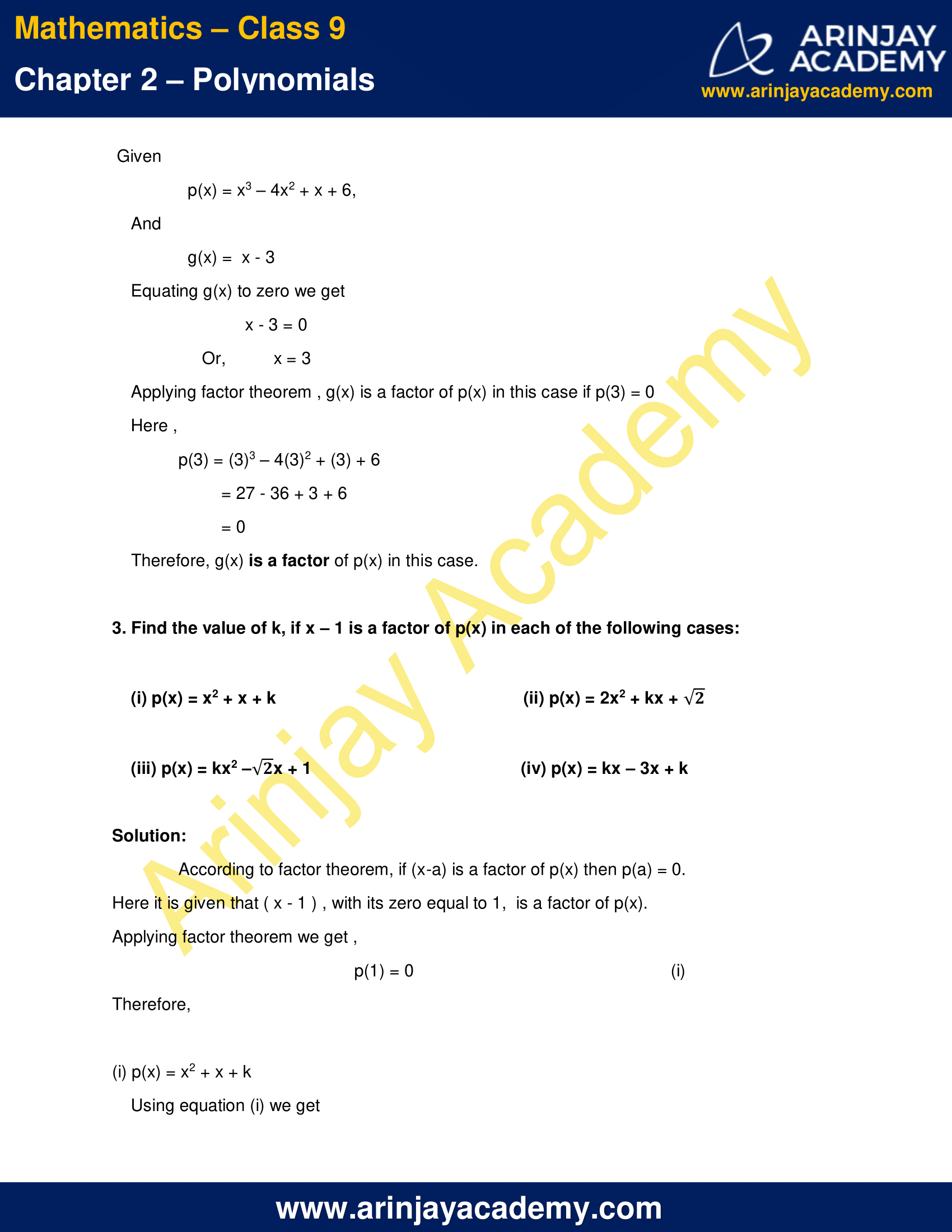


Ncert Solutions For Class 9 Maths Chapter 2 Exercise 2 4 Polynomials


Media Rochester K12 Mi Us Download Token Ocarojcyvwc 3d



If P X 3x2 2x 1 Find P 1 Brainly In
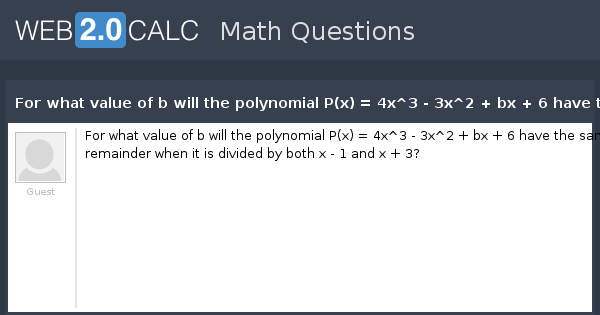


View Question For What Value Of B Will The Polynomial P X 4x 3 3x 2 Bx 6 Have The Same Remainder When It Is Divided By Both X 1 And X 3


How Do You Find All The Zeros Of P X 4x 3 5x 2 3x 10 Socratic



Find The Remainder When X 3 3x 2 3x 1 Is Divided By I X 1 Ii X 1 2 Iii X Iv X P Youtube



Check Whether G X Is A Factor Of P X By Dividing Polynomial P X By G X Where P X X 5 4x 3 X 2 3x 1 G X X 3 3x 1 Mathematics Topperlearning Com O41v2yhh



If P X X3 3x2 2x 4 Then Find The Value Of P 3 P 1 P 0 Brainly In
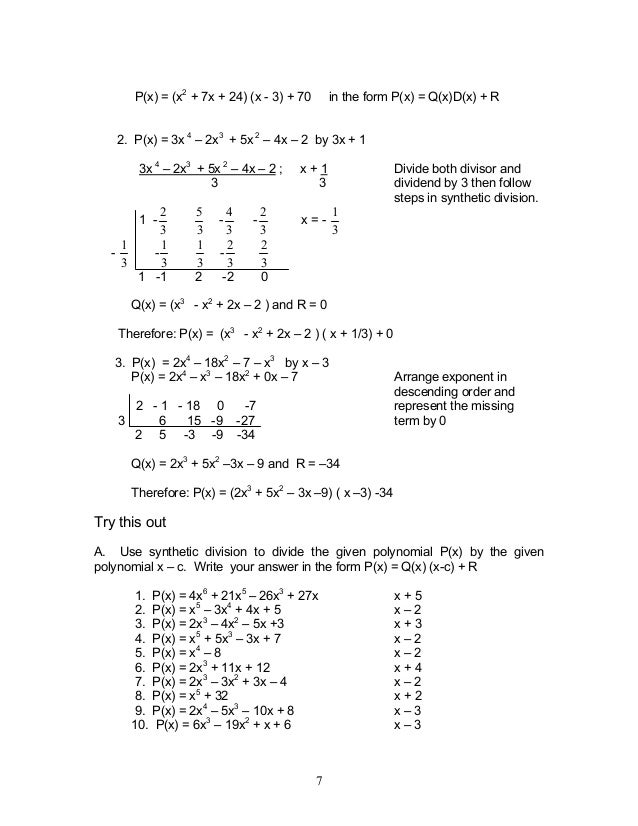


Module 1 Polynomial Functions



Divide P X By G X Where P X X 3x 2 1 And G X 1 X Brainly In



If P X Be A Polynomial Satisfying The Identity P X 2 2x 2 10x 2x P X 1 3 Th Youtube



Divide The Polynomial P X X 3 3x 2 5x 3 By The Polynomial G X X 2 2 Find The Quotient And Remainder



If P X X3 3x2 4x 5 And G X X 2 Find The Quotient And Remainder When P X Is Divided By G X Brainly In



Find The Value Of P If The Polynomial P X X4 2x3 3x2 Px 3p 7 When Divided By X 1 Leaves The Brainly In



Find Remainder Of Polynomial When Divided By X 2 3x 2 Remainder Theorem Application Youtube


The Polynomials Ax 2 3x 2 3 And 2x 3 5x A When Divided By X 4 Leave The Remainders R1 And R2 Respectively Sarthaks Econnect Largest Online Education Community



If P X X 3 3x 2 2x 4 Then Find The Value Of P 2 P 2 P 0 Math Polynomials Meritnation Com
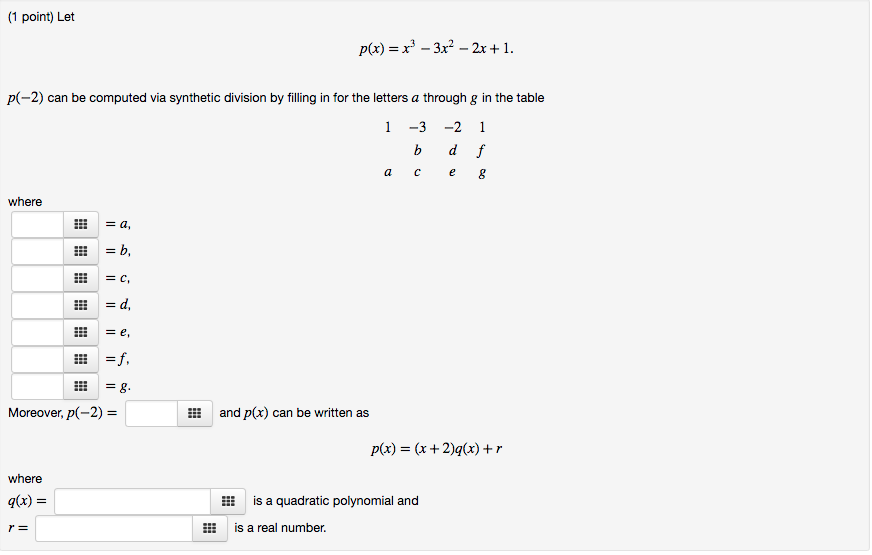


Solved 1 Point Let P X X3 3x2 2x 1 P 2 Can Be Compu Chegg Com
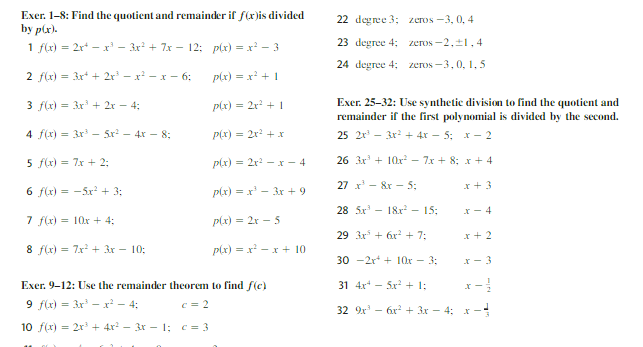


Solved Find The Quotient And Remainder If F X Is Divided Chegg Com



Find A Zero Of The Polynomial I P X X 3 Ii Q X 3x 2 Youtube
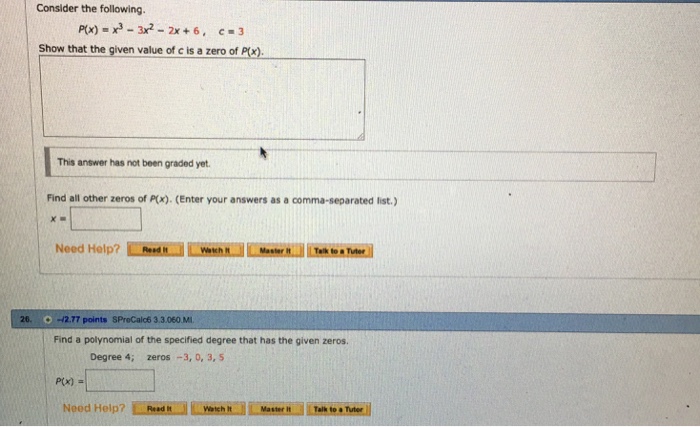


Solved Consider The Following P X X 3 3x 2 2x 6 Chegg Com



If P X X 3 3x 2 4x 5 And S X X 2 Find The Quotient And Remainder When P X Is Divided By S X Brainly In



2 If P X X3 3x2 2x 4 Then Find The Value Of P 2 P Scholr



Example 11 Examine Whether X 2 Is A Factor Of X3 3x2



Ex 2 3 1 Divide Polynomial P X By Polynomial G X And



P X X 3 3x 2 5x 3 G X X 2 2 P X X 4 3x 2 4x 5 G X X 2


Q Tbn And9gcrhlk4xp Mhkwgivosecr0mqfvhvmyvk3wdipumqodtxscfmtp1 Usqp Cau


For Which Values Of A Are The Zeroes Of Q X X 3 2x 2 A Also The Zeroes Of The Polynomial P X X 5 X 4 4x 3 3x 2 3x B
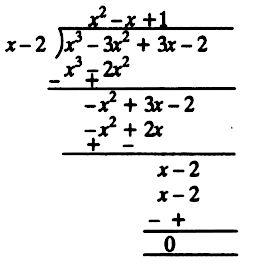


Question On Dividing The Polynomial P X X 3 3x 2 X 2 By A Polynomial G X The Quotient Q X And Remainder R X Were X 2 And 2x 4 Respectively Find G X Snapsolve


Factorise 2x3 3x2 17x 30 Studyrankersonline



The Zeros Of The Polynomial P X X 2 3x Are Youtube



Class 10th Ncert Maths Ex 2 3 Prob 1 Divide The Polynomial P X By The Polynomial G X Youtube
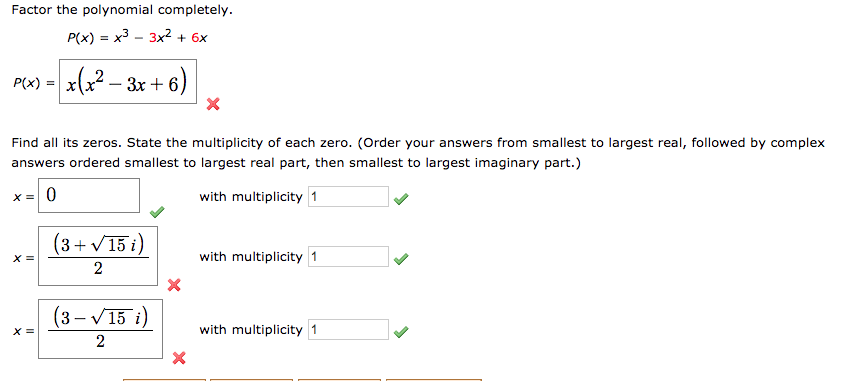


Solved Factor The Polynomial Completely P X X3 3x2 Chegg Com



If P X 3x 3 2x 2 6x 5 Find P 2



Class 9 Polynomial 2 Coordinate Geometry Linear Equation In Two Variables Euclid S Geometry Lines And Angles Notes
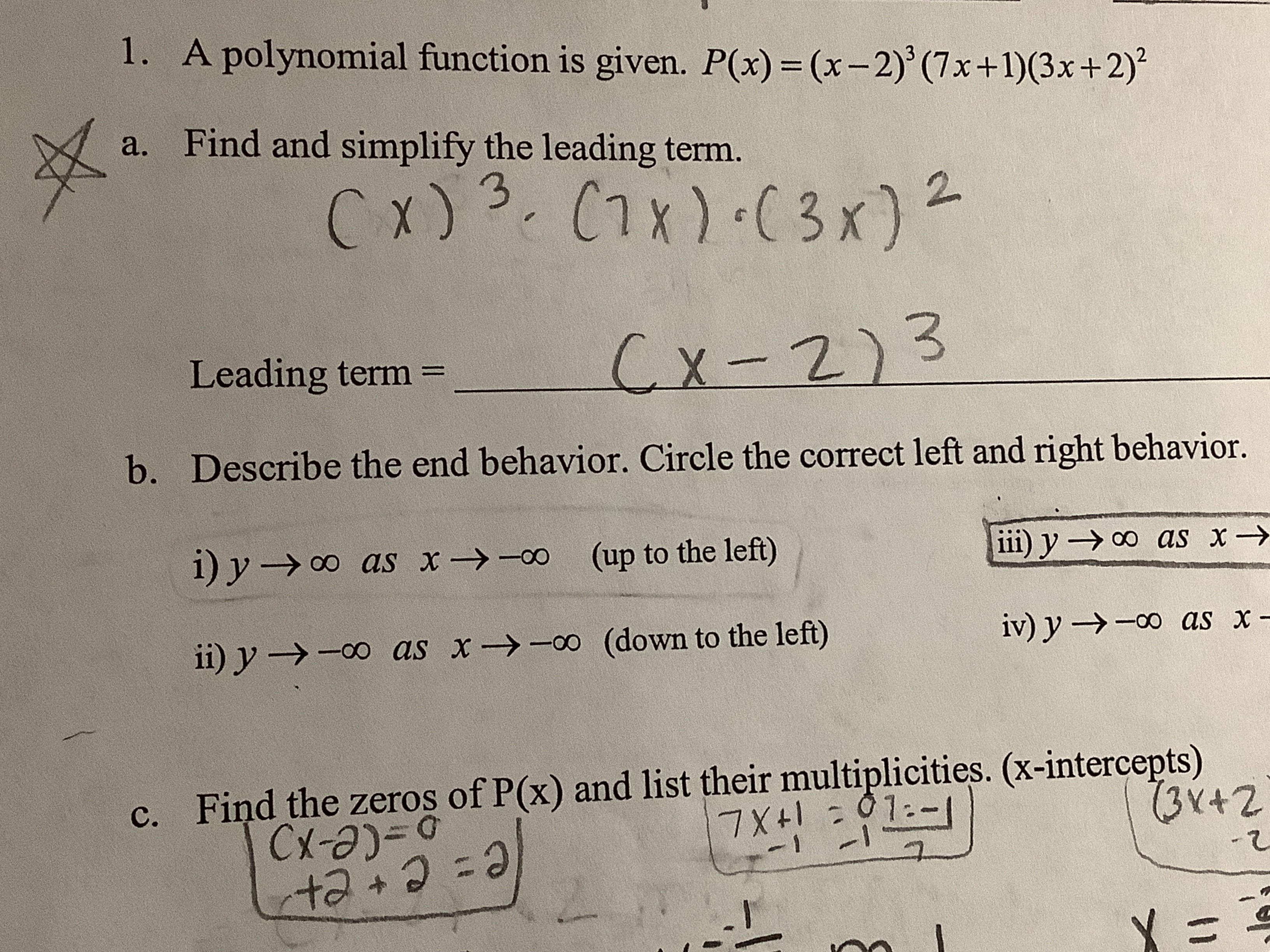


Answered 1 A Polynomial Function Is Given P X Bartleby
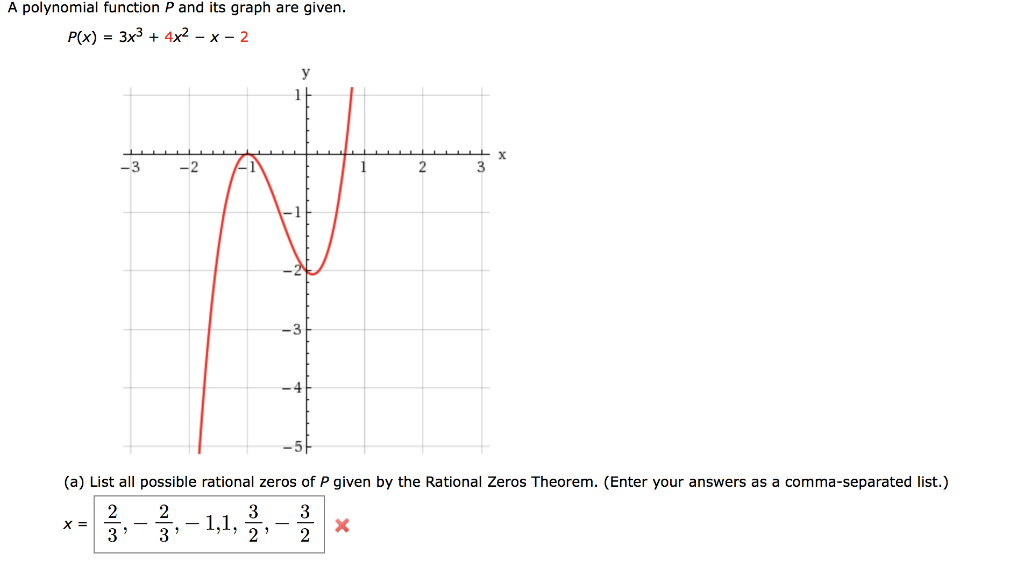


Solved Please Solve These Three Questions 1 A Polynomia Chegg Com



If P X X 3 3x 2 2x Find P 0 P 1 P 2 What Do You Conclude


Http Www Abss K12 Nc Us Cms Lib02 Nc Centricity Domain 54 Doc Pdf



7 3 1 Products And Factors Of Polynomials Products And Factors Of Polynomials Objectives Multiply And Factor Polynomials Use The Factor Theorem Ppt Download



When P X 2x 3 3x 2 11x 3 Is Divided By G X X 1 X Find Remainder Brainly In


Web Ma Utexas Edu Users Aberrizbeitia Practiceproblems2sol Pdf


2



For Which Values Of A And B The Zeroes Of Q X X 3 2x 2 A Are Also The Zeroes Of The Polynomial P X X 5 X 4 4x 3



On Dividing X3 3x2 X 2 By A Polynomial G X The Quotient And Remainder Are X 2 And 2x 4 Respectively Find G X Own Classes



Find All Rational Zeros Of The Polynomial X 3 3x 2 Youtube



Find The Remainder When The Polynomial P X 4x 3 3x 2 2x 4 Is Divided By I X 1 Ii X 2



Polynomials Exercise 2 3 Class 10 Breath Math


2
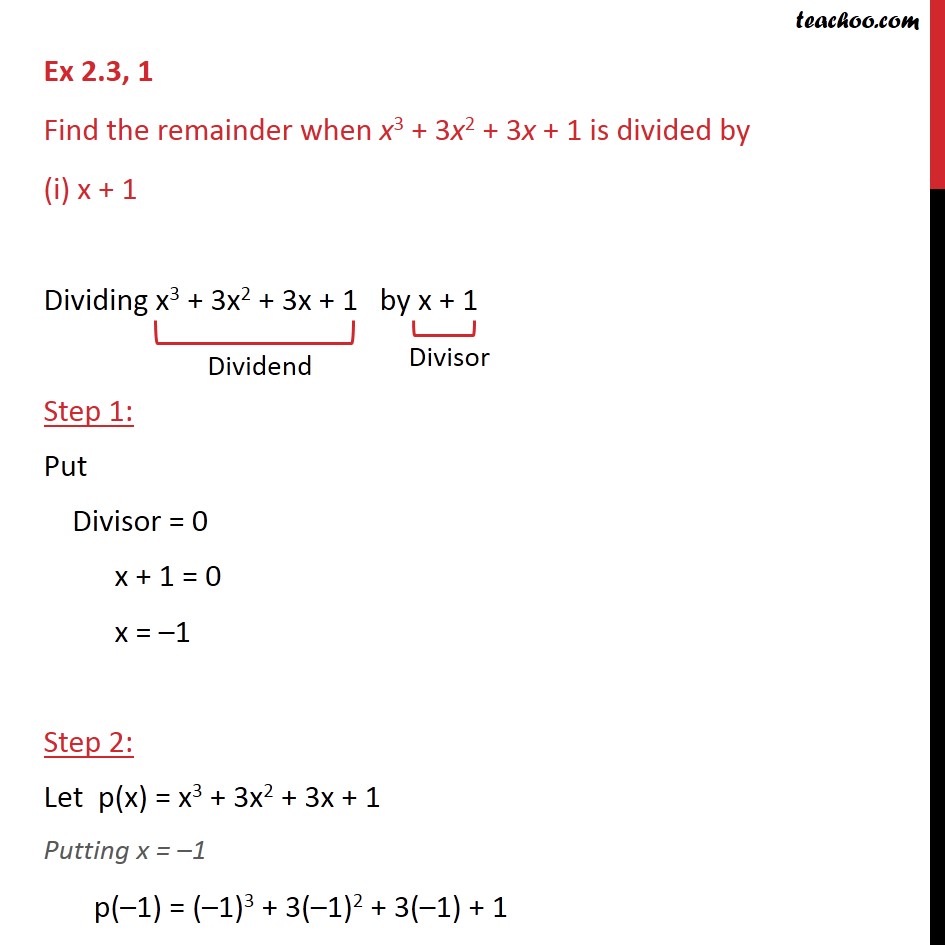


Ex 2 3 1 Find The Remainder When X3 3x2 3x 1 Ex 2 3



Using The Remainder Theorem Find The Remainder When P X Is Divided By G X Where P X 2x 3 3x 2 11x 3 G X Left X Dfrac 1 2 Right



Module 1 Polynomial Functions
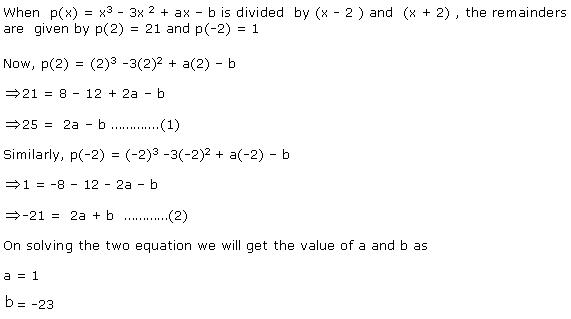


If The Polynomial P X X3 3x2 Ax B Is Such That When Divided By X 2 And X 2 The Remainders Are 21 And 1 Respectively Find The Values Of A


Http Www Mayfieldschools Org Downloads 3 9 practice key2 Pdf


Search Q Divide The Polynomial Tbm Isch
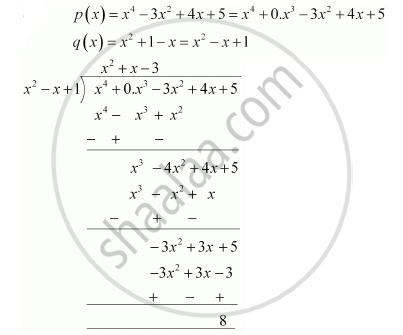


Divide The Polynomial P X By The Polynomial G X And Find The Quotient And Remainder In Each Of The Following P X X 4 3x 2 4x 5 G X X 2



Ex 2 3 1 Divide Polynomial P X By Polynomial G X And



2 If P X X3 3x2 2x 4 Then Find The Value Of P 2 P Scholr



If P X X 3 3x 2 2x 4 Find P 4 P 1 3p 0 Please Answer This Question Please Brainly In



If 2 And 2 Are Zeros Of The Polynomial P X Ax 4 2x 3 3x 2 Bx A Find The Value Of A B Math Polynomials Meritnation Com



Use The Factor Theorem To Determine Whether G X Is A Factor Of P X In Each Of The Following Cases I P X 2x 3 X 2 2x 1 G X X
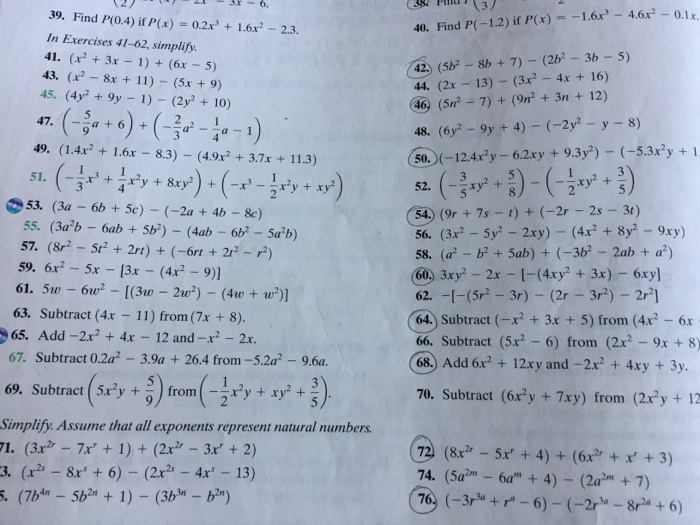


Solved Find P 0 4 If P X 0 2x 3 1 6x 2 2 3 In Ex Chegg Com



The Product Of Two Zeroes Of Polynomial P X X 3 3x 2 6x 8 Is 2 Find All The Zeroes Of The Polynomial
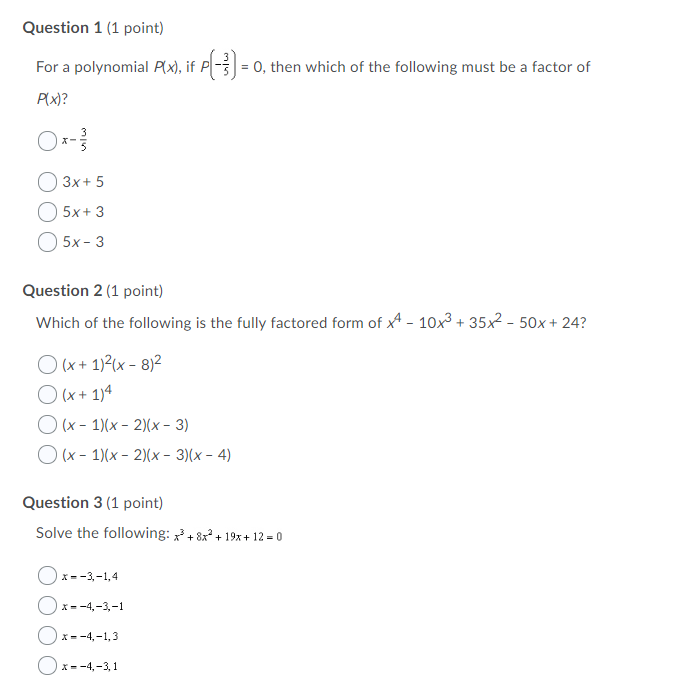


Solved Question 1 1 Point For A Polynomial P X If Pl Chegg Com


The Polynomial P X X4 2x3 3x2 Ax 3a 7 When Divided By X 1 Leaves The Remainder 19 Studyrankersonline
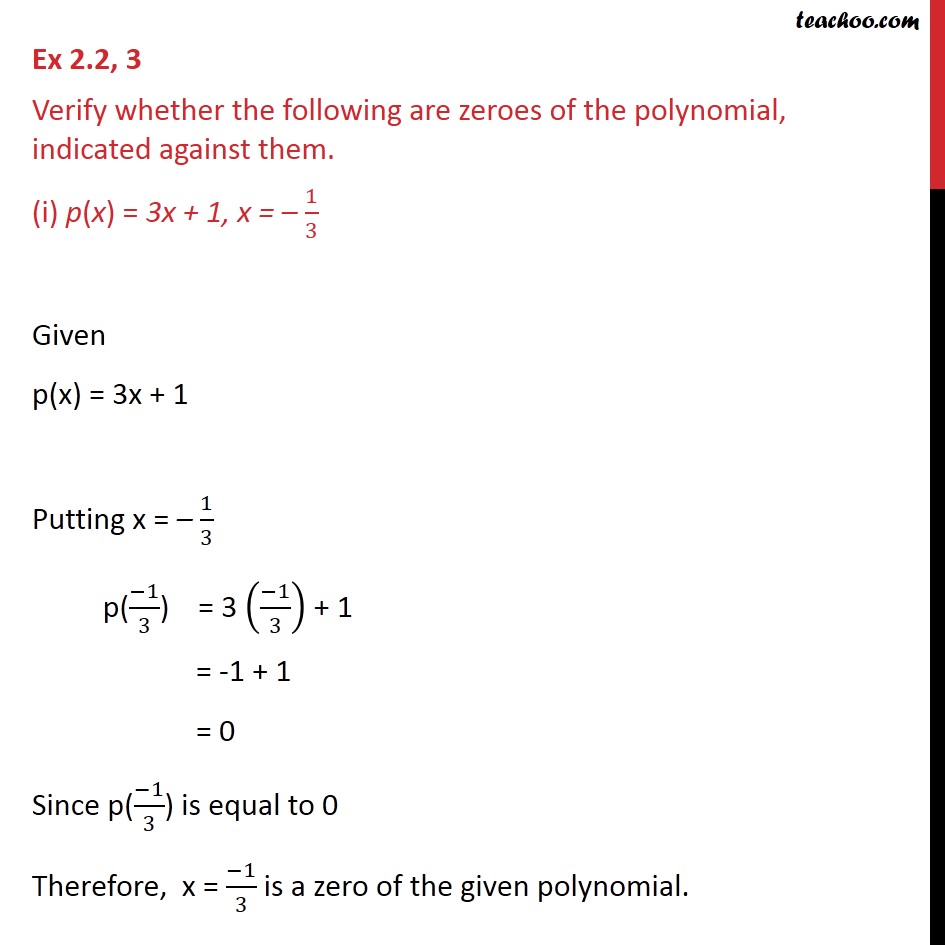


Ex 2 2 3 Verify Whether Following Are Zeroes Of The Ex 2 2


コメント
コメントを投稿